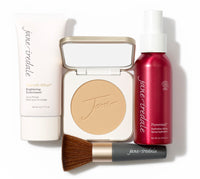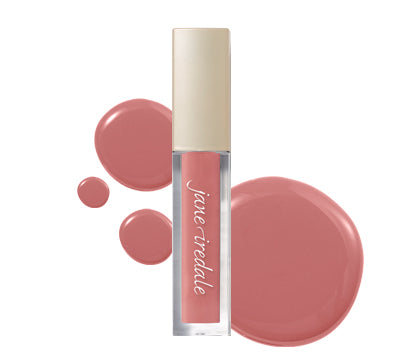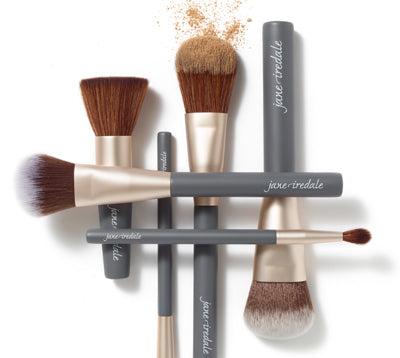
Hello, Sunshine!
I am often asked the question, “What is the best anti-aging thing I can do for my skin?” Without hesitation, the answer is SUNSCREEN. The sun is responsible for approximately 80% of the signs of aging. Blame it for sagging skin and wrinkles; brown spots (hyperpigmentation); white spots (hypopigmentation), and skin cancers. We love the feel of sun on our skin and that glamorous tan, but it is really a time machine on fast-forward. Actually, it’s unfair to blame the entirety of the sun’s rays because it’s the UV rays that are the real culprit.
So, what is UV light anyway?
Ultraviolet(UV) light, what is it? First and foremost, it is a type of electromagnetic radiation with enough energy to break chemical bonds of all kinds, including living tissue. Most of the ultraviolet light falls into wavelengths between visible light and X-ray, and it reaches the earth in wavelengths between 400 nanometers to about 180 nanometers. UVA, or near UV, has a wavelength of 315 - 400 nm, and UVB, or middle UV, has a wavelength between 280 - 315 nm. There is even a third UV band called UVC, or far UV, which is between 180 - 280 nm. UVB penetrates the top layer of the skin (the epidermis), and a suntan is a reaction to exposure to harmful UVB rays. UVA penetrates deeper and can injure living tissue, such as collagen and elastin. I think of it this way – UVA, A for aging, UVB, B for burning.
Is there such a thing as a healthy tan?
“But I always feel healthier when I have a tan!” That’s probably because your body manufactured a good dose of Vitamin D along the way. Vitamin D is made from cholesterol when your skin is exposed to sunlight. Sun exposure is the best way to get Vitamin D because it is difficult to get Vitamin D in substantial amounts in food. But a tan is a sign of injury afterthe damage has been done. A suntan results from the body's natural defense mechanism kicking in. Melanin, a pigment produced by cells in the skin, absorbs UV light and dissipates it as heat. When the body senses sun damage, it sends melanin into the surrounding cells to help protect them from sustaining more damage, and this pigment causes the skin to darken and appear as a tan.
Clearly, we all know when we’ve had “too much sun,” but the insidious part of this is that radiation is bioaccumulative. With repeat exposure, we increase the damaging effect to our skin. For those of us who drive, have you ever noticed that you have more damage on your left side than your right? We’re exposed to UV light from many sources, including our TVs and phones! And I won’t even go into the dangers of tanning booths.
How do I get vitamin D without sun damage?
So, what are the best ways to get Vitamin D and protect this fragile covering that is our face to the world?
Well, obviously staying out of the sun helps, although UV rays penetrate glass and reflect off of surfaces, so it’s impossible to avoid altogether. Wearing hats does help, as does sun-protective clothing when we’re outdoors. In the end, though, it’s sunscreens that are the best sunprotection for our faces and hands that are always exposed to UV light.
Which sunscreen should I use?
Then the next question is, “Which are the best sunscreens?” In the end, it’s going to be the one you like the most, which means that you are more likely to use it and use it often. The US FDA recommends using broad spectrum sunscreens with SPF values of 15 or higher. No sunscreen is perfect, and it will have to be reapplied every two hours, or more if you are sweating or swimming.

Chemical vs. physical sunscreen ingredients, what’s the difference?
The protection of sunscreen takes place on the surface of the skin, but some evidence does exist that some sunscreen active ingredients may be absorbed through the skin and enter the body.
You’ll often hear there are two types of sunscreen active ingredients: chemical active ingredients and physical active ingredients. Chemical active ingredients work by absorbing the sun’s rays, changing them into heat, then releasing the heat. Some people experience irritation with chemical active ingredients, and the risk of irritation greatly increases when applied in the eye area.
We’ve always chosen to use physical sunscreen active ingredients: titanium dioxide and zinc oxide. Physical sunscreen active ingredients come from minerals, and the minerals are too large to be absorbed into the skin. The minerals lay on the surface of the skin where they act like hundreds of thousands of mirrors reflecting and refracting the sun’s rays. If you are sensitive to chemicals, physical sunscreens are good alternatives, as they are less likely to cause irritation in users.
We incorporate these ingredients into our SPF makeup pigment so they are the last layer you apply and not the first. Our sunscreens are also water-resistant and reef-safe.
Last but not least, what SPF should I use?
And what SPF should you wear? First, the SPF rating only applies to sunprotection from UVB rays. You must look for the words “broad spectrum protection,” which includes UVA. All sunscreens with an SPF value greater than 15 sold in the US are required to be broad spectrum.
There is a misconception that the higher the SPF number the better. That isn’t true. An SPF 15 protects from 93% of UVB rays. SPF 30 protects from 97% of UVB rays, and SPF 50 protects from 98%. Confusing, but it’s true. So, if you are wearing a chemical sunscreen that claims a high SPF, you are also wearing correspondingly more chemicals and getting very little bang for your buck. My recommendation is to choose a mineral base with an SPF from 20 – 30, then you are covered, literally and figuratively! And remember, it’s important towear sunscreen all year round, sodon’t forget to applySPF in the winter!
Enjoy the summer!







